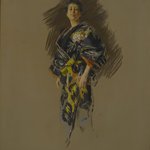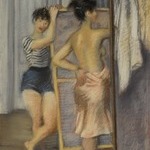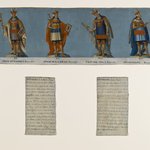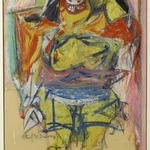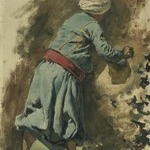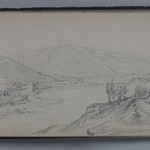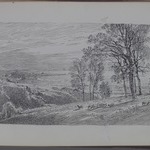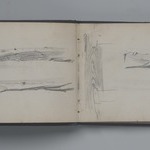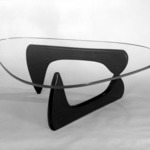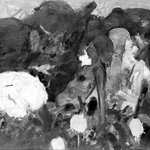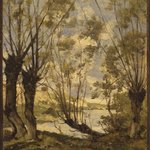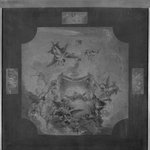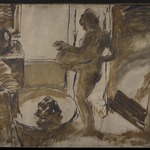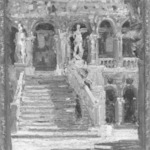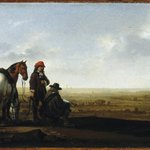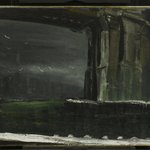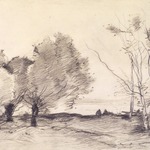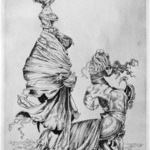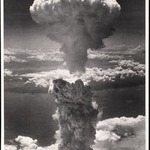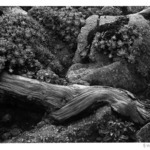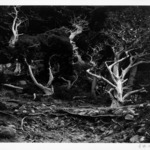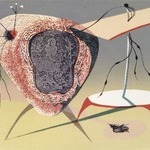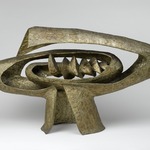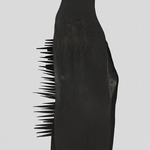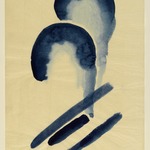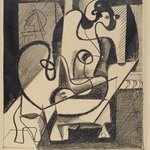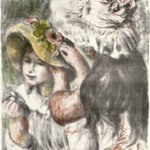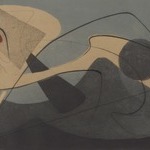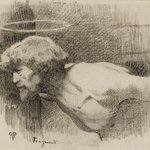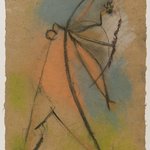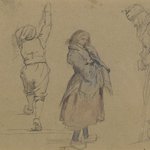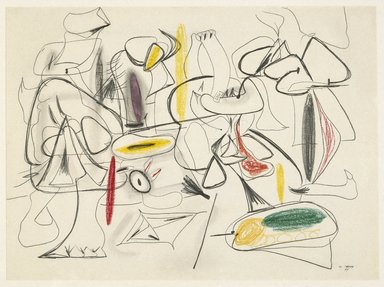
Study for "They Will Take My Island"
Arshile Gorky
American Art
In this painting on paper, biomorphic shapes spread across the picture, changing form and moving in space. As with the Surrealists who practiced automatism, Gorky’s imagery revealed itself only in the process of creation, as pictorial ideas gradually emerged from the subconscious depths of the mind.
Yet on another level, it is interesting to note that Gorky volunteered to serve in the camouflage section of the U.S. Army (though he was rejected on grounds of age). And he organized a class in camouflage painting, at the Grand Central School of Art in New York, because, as he wrote, such work would help the artist “deepen and enrich his understanding of art as well as make him an important contributor to civilian and military defense.” Beyond the self-absorbed practices of the Surrealists, therefore, he felt that art could also play a role in the war effort.
This particular work has been compared to Picasso’s Guernica, painted a few years earlier, which Gorky is known to have admired. Both are intensely personal responses to the violence of war.
Yet on another level, it is interesting to note that Gorky volunteered to serve in the camouflage section of the U.S. Army (though he was rejected on grounds of age). And he organized a class in camouflage painting, at the Grand Central School of Art in New York, because, as he wrote, such work would help the artist “deepen and enrich his understanding of art as well as make him an important contributor to civilian and military defense.” Beyond the self-absorbed practices of the Surrealists, therefore, he felt that art could also play a role in the war effort.
This particular work has been compared to Picasso’s Guernica, painted a few years earlier, which Gorky is known to have admired. Both are intensely personal responses to the violence of war.
ARTIST
Arshile Gorky, American, born Van Province, Ottoman Empire (present–day Turkey), c. 1904–1948
MEDIUM
Crayon on white wove paper
DATES
1944
DIMENSIONS
sheet: 22 × 30 in. (55.9 × 76.2 cm)
frame: 29 5/8 × 37 3/8 × 2 in. (75.2 × 94.9 × 5.1 cm) (show scale)



SIGNATURE
Signed in black crayon, lower right: "A. Gorky / 44"
COLLECTIONS
American Art
ACCESSION NUMBER
57.16
CREDIT LINE
Dick S. Ramsay Fund
EXHIBITIONS
MUSEUM LOCATION
This item is not on view
CAPTION
Arshile Gorky (American, born Van Province, Ottoman Empire (present–day Turkey), c. 1904–1948). Study for "They Will Take My Island," 1944. Crayon on white wove paper, sheet: 22 × 30 in. (55.9 × 76.2 cm). Brooklyn Museum, Dick S. Ramsay Fund, 57.16. © artist or artist's estate (Photo: Brooklyn Museum, 57.16_SL1.jpg)
IMAGE
overall, 57.16_SL1.jpg. Brooklyn Museum photograph
"CUR" at the beginning of an image file name means that the image was created by a curatorial staff member. These study images may be digital point-and-shoot photographs, when we don\'t yet have high-quality studio photography, or they may be scans of older negatives, slides, or photographic prints, providing historical documentation of the object.
RIGHTS STATEMENT
© The Arshile Gorky Foundation
The Brooklyn Museum holds a non-exclusive license to reproduce images of this work of art from the rights holder named here.
The Museum does not warrant that the use of this work will not infringe on the rights of third parties. It is your responsibility to determine and satisfy copyright or other use restrictions before copying, transmitting, or making other use of protected items beyond that allowed by "fair use," as such term is understood under the United States Copyright Act.
For further information about copyright, we recommend resources at the United States Library of Congress, Cornell University, Copyright and Cultural Institutions: Guidelines for U.S. Libraries, Archives, and Museums, and Copyright Watch.
For more information about the Museum's rights project, including how rights types are assigned, please see our blog posts on copyright.
If you have any information regarding this work and rights to it, please contact copyright@brooklynmuseum.org.
If you wish to contact the rights holder for this work, please email copyright@brooklynmuseum.org and we will assist if we can.
RECORD COMPLETENESS
Not every record you will find here is complete. More information is available for some works than for others, and some entries have been updated more recently. Records are frequently reviewed and revised, and we welcome any additional information you might have.
